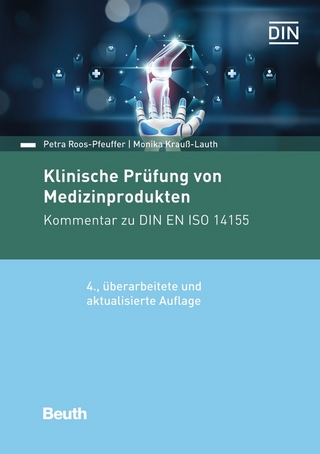
Biology for Engineers, Second Edition
CRC Press (Verlag)
978-1-138-06789-9 (ISBN)
Biology is a critical application area for engineering analysis and design, and students in engineering programs as well as ecologists and environmentalists must be well-versed in the fundamentals of biology as they relate to their field. Biology for Engineers, Second Edition is an introductory text that minimizes unnecessary memorization of connections and classifications and instead emphasizes concepts, technology, and the utilization of living things. Whether students are headed toward a bio-related engineering degree or one of the more traditional majors, biology is so important that all engineering students should know how living things work and act. Emphasizing the ever-present interactions between a biological unit and its physical, chemical, and biological environments, the book provides ample instruction on the basics of physics, chemistry, mathematics, and engineering through a systems approach. It brings together all the concepts one needs to understand the role of biology in modern technology.
Classroom-tested at the University of Maryland, this comprehensive text introduces concepts and terminology needed to understand more advanced biology literature. Filled with practical detailed examples, the book presents:
Presents scientific principles relevant to biology that all engineers, ecologists and environmentalists must know
A discussion of biological responses from the perspective of a broad range of fields such as psychology, human factors, genetics, plant and animal physiology, imaging, control systems, actuary, and medicine
Includes end of chapter questions to test comprehension
Provides updated material to reflect the latest research developments such as CRISPR.
Introduces over 150 interesting application examples, incorporating a number of different engineering disciplines.
Ties biological systems properties and behaviors to foundational sciences such as engineering sciences, chemistry, etc.
Arthur T. Johnson received his Ph.D from Cornell University. He joined the faculty of Biomedical Engineering at the University of Maryland in 1979, where he remained as a tenured professor until he achieved Professor Emeritus status in 2009. He was cochairman of the committee to found the American Instutue for Medical and Biological Engineering (AIMBE) from 1988 to 1992, and served as the Executive Director of AIMBE in 2004. This is now considered the most prestigious organization within the biomedical engineering sciences. He has been President fo the Alliance for Engineering in Medicine and Biology (1984-1988), Institute for Biological Engineering (1998), and International Society for Repiratory Protection (2004-2009). He is a Founding Fellow for the American Institute for Medical and Biological Engineering (1995-1997), Life Fellow of the American Society for Engineering Education (1996), Life Fellow of the American Society for Agricultural and Biological Engineering (2002), Fellow of the American Industrial Hygiene Association (2005), Fellow of the Biomedical Engineering Society (2005), and a Life Fellow of the Institute of for Electrical and Electronics Engineers (IEEE - 2010). He has published three books, holds 24 patents and published over 200 peer reviewed journal articles largely dealing with engineering education, human performance and respiratory engineering and biosystems engineering. He has taught the biology for engineers course at the U of Maryland for the past 10 years. He also operates a 49 acre farm producting organically-raised fruit for sale at the local farmers' market.
Introduction. Science and Engineering. Scientific Method. Mathematical Modeling. Biological Engineering. Expectations for Biological Engineers. About Predictions. About This Book. Questions. Principles from the Sciences. Principles of Physics. Effort and Flow Variables. Balances. States of Matter. Equivalence of Work and Energy. Free Energy. Disorder and Entropy. Heat Transfer. Movement of Materials. Fluid Mechanics. Solid Mechanics. Electricity. Temperature Effects. Questions. Principles of Chemistry. Chemical Equilibrium. Acids and Bases. Reaction Rates. Carbon Chemistry. Physical Chemistry in Water. Protein Folding. Shape Effects and Enzymes. Energy-Rich Compounds. Questions. Principles of Mathematics and Engineering Sciences. Control Systems. Principles of Biology. Questions. Responses of Living Systems. Biological Responses in Context (BRIC). Questions. Scaling Factors. Allometric Relationships. Questions. Utilizing Living Systems. Biological Engineering Solutions.
| Erscheinungsdatum | 16.10.2018 |
|---|---|
| Zusatzinfo | 81 Tables, color; 330 Illustrations, color; 5 Illustrations, black and white |
| Verlagsort | London |
| Sprache | englisch |
| Maße | 178 x 254 mm |
| Gewicht | 2222 g |
| Themenwelt | Medizin / Pharmazie ► Pharmazie |
| Medizin / Pharmazie ► Physiotherapie / Ergotherapie ► Orthopädie | |
| Naturwissenschaften ► Biologie ► Biochemie | |
| Technik ► Medizintechnik | |
| ISBN-10 | 1-138-06789-X / 113806789X |
| ISBN-13 | 978-1-138-06789-9 / 9781138067899 |
| Zustand | Neuware |
| Informationen gemäß Produktsicherheitsverordnung (GPSR) | |
| Haben Sie eine Frage zum Produkt? |
aus dem Bereich


